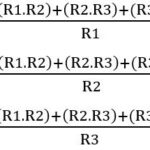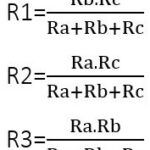SNTP, or Simple Network Time Protocol, is a simplified version of the Network Time Protocol (NTP) designed to provide time synchronization for networked systems with reduced complexity and resource requirements. Here’s how SNTP works:
SNTP operates on the client-server model, where client devices (such as computers or network devices) synchronize their clocks with a designated time server. The time server maintains a highly accurate reference clock, often synchronized with an external time source such as GPS or atomic clocks.
SNTP clients periodically send time synchronization requests to the time server. These requests include a timestamp indicating the client’s current time. The time server responds by sending its own timestamp, indicating the server’s current time.
Upon receiving the server’s response, the SNTP client calculates the round-trip time (RTT) of the request and adjusts its local clock to minimize the time difference between the client and server timestamps. This adjustment helps maintain accurate timekeeping across the networked devices.
SNTP is designed for simplicity and efficiency, making it suitable for applications and devices that require basic time synchronization without the advanced features and complexities of full NTP implementations. It provides essential functionality for maintaining time consistency across networked systems, ensuring that operations dependent on accurate timekeeping remain synchronized.
SNTP, or Simple Network Time Protocol, is a lightweight protocol used for synchronizing clocks across a network. It is derived from the Network Time Protocol (NTP) and shares similar functionality but with reduced complexity. SNTP operates on the same principles as NTP, using client-server communication to synchronize time across networked devices.
SNTP clients periodically query designated time servers for the current time. These queries are straightforward and do not involve the more intricate algorithms and mechanisms used in NTP for precision timing adjustments and error correction.
Time servers in SNTP respond with the current time, allowing clients to adjust their local clocks accordingly. This synchronization ensures that networked devices maintain consistent time measurements, which is crucial for applications requiring time-sensitive operations, such as logging, authentication, and transaction processing.
SNTP’s accuracy depends on several factors, including the quality and reliability of the time servers used, network latency, and the frequency of time synchronization updates.
In optimal conditions, SNTP can achieve accuracy within tens of milliseconds to a few seconds, suitable for most general-purpose applications. However, compared to the more sophisticated algorithms and extensive monitoring capabilities of full NTP implementations, SNTP may have slightly lower accuracy and precision.
For applications requiring extremely precise time synchronization, such as scientific research, financial trading, or telecommunications, more advanced NTP implementations or specialized timekeeping solutions may be preferred to achieve microsecond-level accuracy and maintain synchronization across distributed systems.


